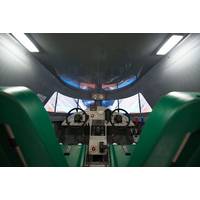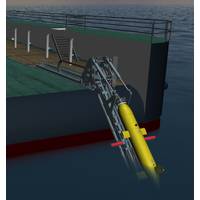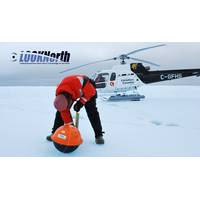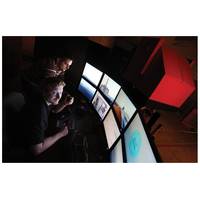
Prosafe Crew to Train Using a New Lifeboat Simulator
Virtual Marine Technology said it has delivered a second lifeboat simulator system to Prosafe. The simulator was custom built for training lifeboat coxswains onboard the Safe Zephyrus, one of Prosafe’s newest accommodation rigs. The Safe Zephyrus was constructed at Jurong Shipyard Pte Ltd in Singapore. The vessel complies with Norwegian regulations and is capable of operating in the harshest environments and with the highest standards of safety. It can accommodate up to 450 people in single person cabins. The installation of the lifeboat simulator took place in Scapa Flow

Virtual Worlds: Newfoundland and Labrador's Simulator Tech
its simulation capacity to nurture the next wave of ocean experts through its School of Maritime Studies and its School of Ocean Technology. Further to the in-house capabilities of CMS are private companies specializing in the fields of lifeboat and ROV (Remote Operated Vehicle) simulation. Virtual Marine Technology (VMT), incorporated in 2004, has created simulation systems which allow lifeboat operators to practice lifeboat launch, operation and recovery drills using equipment specific to the type of lifeboat on board their platform, drilling rig or vessel. The cabin-based systems, not unlike flight

The World’s Cold Ocean Lab
technologies, ocean mapping, and underwater technology. MUN is also home to the Genesis Center, a small business incubator that helps to grow business startups – including ocean technology companies – and advance technology developed at an academic level into commercialization. Virtual Marine Technology (VMT) exemplifies the power of this process. Incorporated in 2004, VMT specializes in small vessel simulation, meeting a need in the global market. While simulation of large vessels was already very advanced a decade ago, there was a dearth internationally of simulation technology for small

The Path to the Arctic
theatre, provides the ability to accurately simulate the sea conditions of anywhere in the world when testing models. MI has sixteen simulators at its disposal, including a new engine room simulator, a tug simulator, ballast control simulators, and small vessel simulators through VMT (Virtual Marine Technology), a local simulation company. A seventeenth is soon to be added in the shape of a deepwater anchor handler simulator. MI is training the next wave of ocean experts through the School of Ocean Technology and the Center for Applied Ocean Technology. These schools are committed to

The Quest for Arctic O&G Standards
involvement on the technical committee internationally. Companies located in the province that were represented at the meetings include: Provincial Aerospace, AMEC Environment & Infrastructure, AKAC Inc., Iceberg Logistics Inc., Rutter Inc., Oceans Ltd., Oceanic Consulting, Deltaradar, and Virtual Marine Technology. OceansAdvance, the organization that represents the ocean technology cluster in the province, coordinated the event. “The entry of the International Organization for Standardization into the Arctic equation can be seen as a strong affirmation that the region is on the cusp of major
Lockheed Martin Seeking Atlantic Canada Companies for Shipbuilding Projects
Energy, GRI Simulations, ICAN / CNS Systems, ID Blue, Kraken Sonar Systems, Marine Institute, Memorial University of Newfoundland, NavSim Technologies, Northern Radar, Notus Electronics, Oceanic / Fleetway, Pangeo Subsea, Pennecon Energy, Provincial Aerospace, Rutter, Solace Power, Verafin, Virtual Marine Technology and others. Lockheed Martin Canada is currently executing on the $2.1 billion Halifax Class Modernization program, which is a mid-life refit of Canada’s 12 multi-role patrol frigates to ensure that they continue to operate effectively as the backbone of the Royal Canadian Navy&rsquo

Survival Training & The Virtual World
, in order to receive certification, seafarers must be able to demonstrate that they possess critical safety skills that would be required in shipboard emergencies, such as firefighting and lifeboat launching. As an example of such an emergency, Captain Anthony Patterson, President and CEO of Virtual Marine Technology (VMT) of St. John’s, Newfoundland, cites the MSC Napoli—a container ship that had to be evacuated in the English Channel in 2007 due to hull damage. “The convention is clear,” he says. “You have to demonstrate your competence to do this job using real equipment



 February 2024
February 2024





